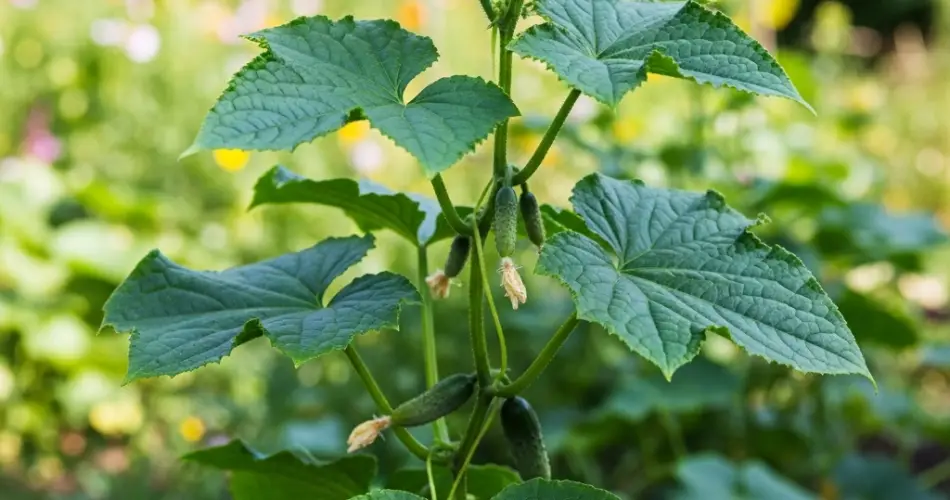Cucumbers are one of the most popular and rewarding vegetables to grow in the home garden. Crisp, refreshing, and ideal for salads, pickling, or just eating fresh, cucumbers are a staple in summer gardens. However, even though cucumbers are relatively easy to grow, they still benefit from the right care and a little help from natural fertilizers. There’s a simple, affordable ingredient you can use to dramatically boost their growth — and it only takes a tablespoon.
The Secret: One Tablespoon of Sugar
Believe it or not, the secret ingredient is sugar. Just a tablespoon of regular granulated sugar can make a noticeable difference in how your cucumber plants grow. Sugar isn’t just a sweetener for human consumption — in the right conditions, it can act as a powerful stimulant for plant growth.
Here’s how and why it works:
Sugar provides a quick energy source for beneficial soil microbes. These microbes are essential for breaking down organic material in the soil and making nutrients more available to plant roots. When these microbes are well-fed, they multiply rapidly, enriching the soil and supporting vigorous plant growth.
Additionally, sugar can help reduce stress in plants, especially during periods of rapid growth, flowering, or fruit development. When applied in small amounts, it can improve flowering, boost fruit set, and enhance overall plant vitality.
How to Use Sugar on Your Cucumber Plants
Using sugar in your garden is simple, but it’s important to do it correctly to avoid any negative effects.
What You’ll Need:
-
1 tablespoon of granulated sugar
-
1 liter of warm (not hot) water
-
A watering can or spray bottle
Instructions:
-
Dissolve the tablespoon of sugar in one liter of warm water. Stir well until the sugar is completely dissolved.
-
Pour this solution directly at the base of each cucumber plant. Alternatively, you can spray it onto the soil around the plant. Avoid spraying it directly on the leaves to reduce the risk of attracting pests.
-
Apply this sugar solution no more than once every two weeks during the growing season.
Why It Works So Well
Cucumber plants are heavy feeders — they require rich, well-fertilized soil to produce high yields of healthy fruit. Sugar doesn’t replace traditional fertilizers, but it complements them by boosting microbial activity and improving nutrient uptake.
Think of sugar as a catalyst. It energizes the soil life and helps the plant absorb what’s already there more efficiently. This leads to faster growth, stronger stems, more flowers, and ultimately, more cucumbers.
Combine with Organic Fertilizers
To get the best results, combine sugar with organic fertilizers. Here are a few natural amendments that work well with sugar:
-
Compost: Rich in nutrients and full of beneficial organisms, compost is an excellent base fertilizer.
-
Banana peel tea: Soak banana peels in water for 2–3 days and use the water as a potassium-rich feed.
-
Crushed eggshells: These slowly release calcium, which supports strong cell walls and helps prevent blossom end rot.
-
Wood ash (sparingly): A natural source of potassium and trace minerals.
When sugar is used in conjunction with these natural fertilizers, your cucumber plants will have everything they need to grow quickly and fruit abundantly.
A Few Precautions
While sugar can be incredibly beneficial in small doses, overuse can lead to problems:
-
Attracting ants or pests: Excess sugar on the soil can attract unwanted insects.
-
Fungal issues: Too much sugar in the soil may lead to the growth of mold or harmful fungi.
-
Root damage: High concentrations of sugar can sometimes disturb the soil’s moisture balance.
To avoid these issues, stick to the recommended dosage of one tablespoon per liter of water and apply no more than twice a month.
Final Thoughts
With just a tablespoon of sugar, you can give your cucumber plants the boost they need to produce more fruit, grow stronger, and thrive throughout the season. This simple, natural method is a great addition to your gardening routine. It’s inexpensive, effective, and easy to apply — perfect for beginner and experienced gardeners alike.
Try it once, and you might be surprised how much difference it makes. Sometimes the simplest solutions really are the best when it comes to gardening.



